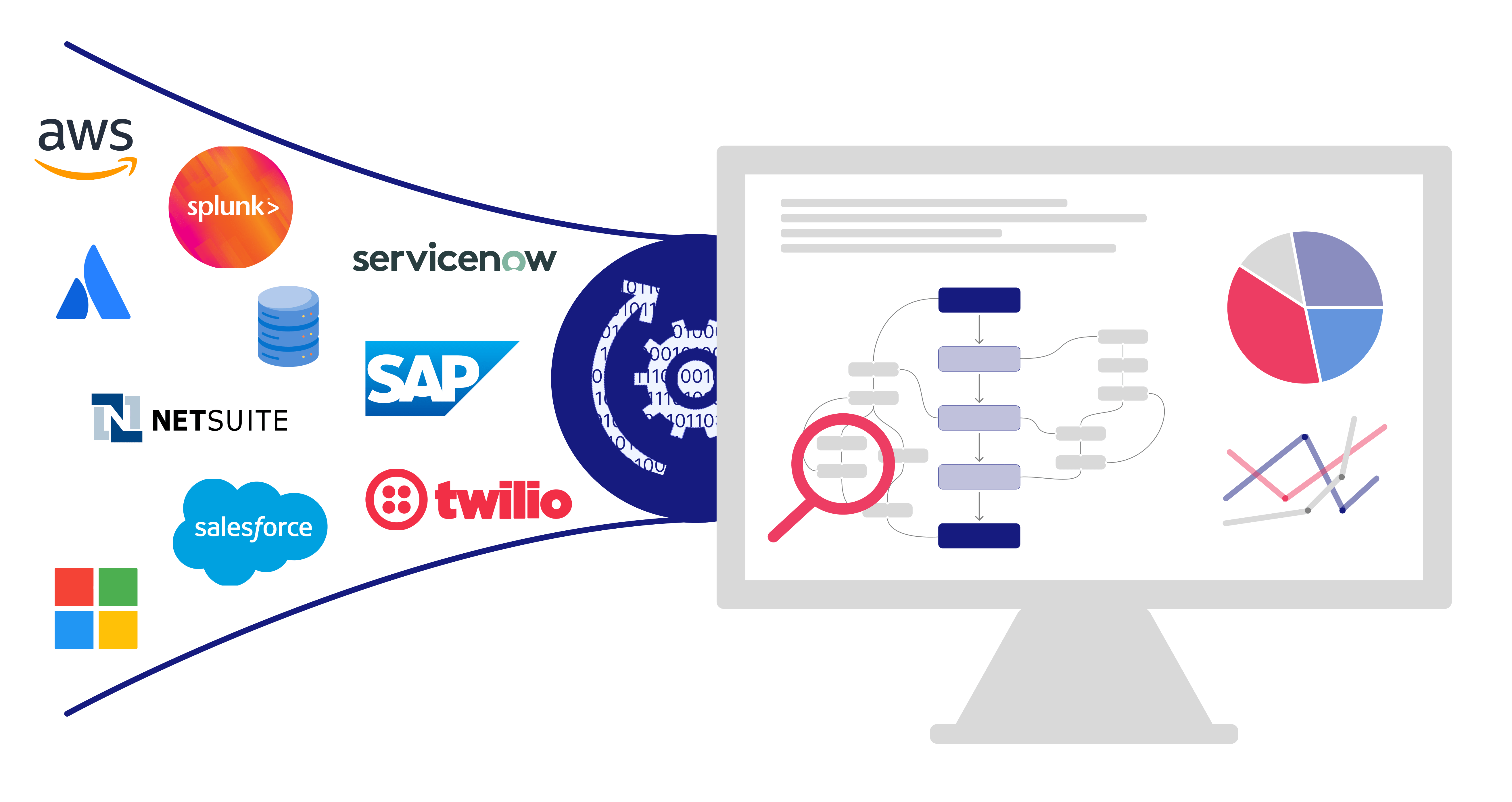Close
What is Composable Application Development?
- 20 minute read


What is Composability?
Composability is a design principle that emphasizes the ability to combine and recombine various components or elements to create complex systems or solutions. This concept is fundamental across many domains, including software development, architecture, design, and even organizational structures. The core idea is that by building systems with modular, interchangeable parts, you can achieve greater flexibility, scalability, and efficiency.
Composability in Different Contexts
Software Development:
- Microservices Architecture: Composability is a core principle of microservices architecture, where applications are built from small, independent services that can be combined in various ways to create complex systems.
- APIs and SDKs: APIs (Application Programming Interfaces) and SDKs (Software Development Kits) allow developers to compose applications by integrating various services and functionalities provided by third-party vendors.
Business and Organizational Structures:
- Agile Teams: In business, composability can refer to the formation of cross-functional teams that can be restructured or recomposed as needed to tackle different projects or challenges.
- Business Ecosystems: Companies can participate in ecosystems where they offer and consume modular services, allowing for greater flexibility in how they deliver value to customers.
Design and Engineering:
- Modular Design: In physical product design, composability manifests as modular products that can be assembled from standard parts, allowing for customization and easier maintenance.
- Urban Planning: In architecture and urban planning, composable design principles allow for buildings and public spaces to be adapted or expanded as needs change over time.
Cloud and IT Infrastructure:
- Composable Infrastructure: In IT, composable infrastructure refers to systems where computing, storage, and networking resources can be dynamically assembled and managed through software, allowing for more flexible and efficient resource utilization.
What is Composable Enterprise Application Development?
Composable enterprise application development is an approach that breaks down applications into modular, reusable components or “building blocks” that can be easily assembled, reassembled, and scaled according to the specific needs of a business. This approach is rooted in the concept of composable architecture, which is characterized by three core principles:
Modularity: Applications are built using independent, self-contained modules that can function on their own or be integrated with other modules to create complex solutions.
Autonomy: Each module or component operates independently, allowing for individual updates, scaling, and optimization without disrupting the entire system.
Discoverability: Components are designed to be easily found, understood, and reused across different teams and projects within the organization.
These principles allow businesses to create tailored applications by composing existing modules, rather than building from scratch, enabling faster development cycles and reducing time-to-market.
The Strategic Advantages of Composable Development
1. Agility & Speed
Market conditions and customer expectations change rapidly, the ability to quickly adapt is critical. Composable development allows businesses to rapidly assemble and deploy new functionalities or reconfigure existing applications to meet emerging needs. This agility is particularly crucial for organizations undergoing digital transformation, where the ability to pivot and iterate is a competitive advantage.
2. Scalability
With composable development, scaling an application doesn’t require a complete overhaul. Individual modules can be scaled independently based on demand, ensuring optimal performance and resource utilization. This is especially beneficial for businesses experiencing fluctuating workloads or seasonal variations in demand.
3. Innovation through Ecosystems
By leveraging an ecosystem of pre-built components from third-party providers, businesses can accelerate innovation without reinventing the wheel. These ecosystems often include integrations with cutting-edge technologies like artificial intelligence, machine learning, and blockchain, enabling businesses to incorporate advanced capabilities with minimal effort.
4. Cost Efficiency
Traditional enterprise application development often involves significant upfront investment and long development cycles. Composable development, on the other hand, reduces costs by reusing existing modules, minimizing redundant work, and allowing for incremental investment as needed. This approach aligns well with the principles of no-code and low-code development platforms, which empower even non-technical teams to participate in the application development process.
5. Enhanced User Experience
With composable applications, businesses can tailor their solutions to meet the specific needs of different user groups. Whether it’s customizing the interface for different departments or integrating personalized workflows, the flexibility of composable development ensures a more user-centric approach.
How to Apply Composability?
To effectively take advantage of composable application development, organizations need to implement several key elements that align with the principles of modularity, autonomy, and discoverability. Here are the essential components:
Modular Architecture
- Microservices: Break down applications into microservices, where each service is a self-contained unit with a specific function. Microservices can be independently developed, deployed, and scaled, facilitating composability.
- APIs (Application Programming Interfaces): Use well-defined APIs to enable communication between different modules. APIs ensure that components can be easily integrated and reused across different applications.
Reusable Components
- Component Libraries: Develop or leverage existing libraries of reusable components that can be easily discovered and integrated into new or existing applications. These libraries should include a variety of pre-built functionalities, such as authentication, data processing, and user interface elements.
- Templates and Blueprints: Provide ready-made templates or blueprints that can serve as starting points for building applications. These should be customizable and adaptable to specific business needs.
Integration Platforms
- iPaaS (Integration Platform as a Service): Use an iPaaS to facilitate the seamless integration of different modules, both within the enterprise and with external services. An iPaaS can help manage data flow, API connections, and workflow orchestration between different components.
- Event-Driven Architecture: Implement an event-driven architecture where components can respond to events in real time. This enables greater flexibility and responsiveness, as modules can be composed and recomposed based on dynamic events.
No-Code/Low-Code Platforms
- Development Tools: Empower business users and non-technical teams with no-code or low-code development platforms. These platforms should allow users to assemble and configure applications using a visual interface, reducing the need for traditional coding and speeding up the development process.
- Customization Capabilities: Ensure that these platforms offer customization options for more advanced users, allowing for deeper configuration and fine-tuning of the composed applications.
Governance and Security
- Governance Framework: Establish a governance framework that defines standards for component development, integration, and maintenance. This includes version control, dependency management, and lifecycle management of components.
- Security Protocols: Implement robust security measures to protect data and ensure compliance with regulatory requirements. This includes secure API gateways, encryption, and access control policies for different components.
Scalability and Performance Management
- Containerization: Use containerization technologies (e.g., Docker, Kubernetes) to package and deploy components consistently across different environments. Containers ensure that each module operates in an isolated environment, making it easier to scale and manage performance.
- Monitoring and Analytics: Deploy monitoring tools to track the performance and health of individual components and the overall system. Analytics can provide insights into usage patterns, potential bottlenecks, and opportunities for optimization
Culture of Collaboration and Innovation
- Cross-Functional Teams: Promote collaboration across different departments, including IT, business, and operations teams. Cross-functional teams can better understand the needs of the business and work together to compose applications that meet those needs.
- Continuous Learning and Upskilling: Invest in training and development to equip teams with the skills needed for composable development, such as microservices architecture, API management, and containerization.
Ecosystem of Third-Party Services
- Partner Ecosystems: Leverage an ecosystem of third-party services and vendors that offer pre-built components and integrations. These ecosystems can accelerate development by providing access to advanced technologies and specialized services without the need for in-house development.
- Marketplaces and App Stores: Utilize marketplaces and app stores where modular components and applications can be easily discovered, purchased, and integrated. These platforms often include reviews, ratings, and documentation to help teams make informed decisions.
Discoverability and Documentation
- Component Catalog: Create a centralized catalog where all available components, templates, and blueprints are documented and indexed. This catalog should include detailed descriptions, usage guidelines, and integration instructions to facilitate discoverability and reuse.
- Search and Tagging: Implement search and tagging functionalities to help users quickly find the components they need. Effective discoverability ensures that teams can easily locate and utilize existing modules, reducing duplication of effort.
Automation and DevOps Practices
- CI/CD (Continuous Integration/Continuous Deployment): Integrate CI/CD pipelines to automate the testing, integration, and deployment of components. Automation accelerates the development process and ensures that composed applications are consistently deployed and updated.
- Infrastructure as Code (IaC): Adopt Infrastructure as Code practices to manage and provision infrastructure through code. IaC allows for consistent and repeatable deployments, aligning with the principles of composability.
To fully leverage composable enterprise application development, organizations must invest in modular architecture, reusable components, integration platforms, and a culture of collaboration. By adopting these elements, businesses can achieve greater agility, scalability, and innovation, positioning themselves for success in a rapidly changing digital landscape.
Tags:
Related articles
The Challenges of AI in Large Organizations
•
June 12, 2024
Large organizations are facing significant challenges in effectively implementing AI initiatives despite its potential to revolutionize operations. To overcome obstacles, organizations can adopt strategic solutions such as investing in talent, collaborating with external experts, and more.
Best Practices for Working With a Blended Team
•
March 28, 2024
Discover how to unlock the full potential of your blended team with key strategies for seamless collaboration and productivity, ensuring project success across borders and time zones. Dive into the best practices that will elevate your team's performance and deliver exceptional value to your clients.
Transforming Workflows: Exploring the Power of Process Mining
•
March 14, 2024
Find out what low-code and no-code development is and the differences and explore which would be best suited to your organization for automation and Digital Transformation projects.
START WORKING WITH US
We'd Love to Hear from You
At our IT solution company, we are committed to providing exceptional customer service and support. If you are experiencing technical difficulties or need assistance with one of our services.
Call us at: +1 805-304-0144
Your Benefits:
- Client-oriented
- Competent
- Problem-solving
- Independent
- Results-driven
- Transparent
What happens next?
1
We schedule a call at your convenience
2
We do a discovery & consulting meeting
3
We prepare a proposal






